By Eric Vandenbroeck
and co-workers
The Reinvention Of China
It Is No Secret That China Intends
To Seize Taiwan By 2027
On 10 Dec.
2022, an analyst at the Center for Advanced China Research boldly asked to
suppose the US would defeat a Chinese Invasion of Taiwan. What Then?
Recently,
the Pentagon warned of China’s plans for dominance in Taiwan and beyond.
As part of its buildup, the U.S. says that China’s military conducted more
ballistic missile tests last year than the rest of the world
combined. Chinese fighter jets or drones that intrude into Taiwan’s
territorial airspace will be regarded as a “first strike,” Taiwan’s Defense Minister
warned Wednesday, as the island seeks to step up its
defenses in response to Beijing’s military pressure.
Taiwan has noticed a hole in its defense plans that is
steadily getting bigger. And it’s not easily plugged by boosting the budget or
buying more weapons. The island
democracy of 23.5 million is facing an increasing challenge in recruiting
enough young men to meet its military targets. Its Interior Ministry has
suggested the problem is partly due to its stubbornly low birth rate. Taiwan’s
population fell for the first time in 2020, according to the ministry, which
warned earlier this year that the 2022 military intake would be the lowest in a
decade and that a continued drop in the youth population would pose a “huge
challenge” for the future..
As a reaction to the
above, Japan unveiled a
new national security plan that signals the country’s most significant
military buildup since World War II, doubling defense spending and veering from
its pacifist constitution in the face of growing threats from regional rivals.
But as we have
already observed and frequently analyzed Taiwan for about ten years. Suddenly,
one incident happened during the first quarter of 1919 at the prestigious The
London School Of Economics (LSE), where many heads of state would send their
teenagers and young adults to study there. And while by then, we had already
posted an extensive analysis of how mapmaking developed
in China.
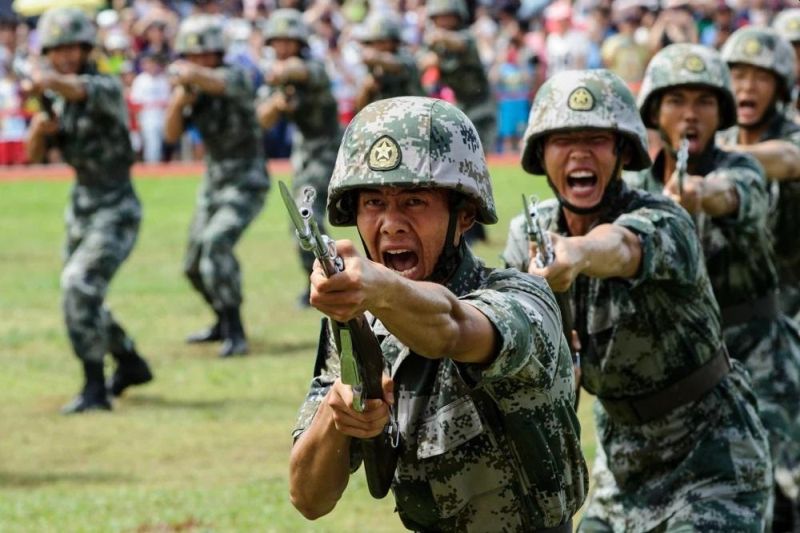
London School of Economics Dilemma
Not too late, 26 March
2019 suddenly became a particularly proud day for the director and staff of the
London School of Economics. A new sculpture by the Turner Prize-winning artist
Mark Wallinger was being unveiled right
outside the recently completed student center. Wallinger’s work
was entitled The World Turned Upside Down, a literal description of the piece.
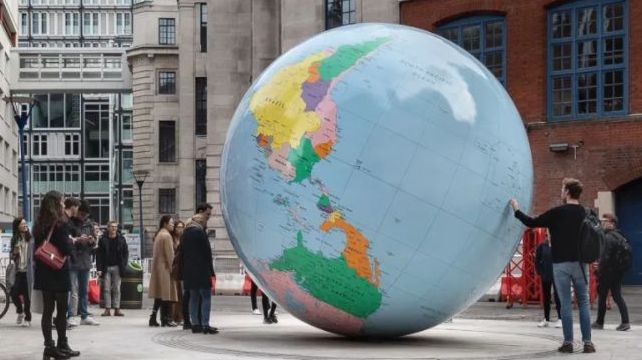
But one group of
students was unprepared to see the world from a different point of view. Within hours of the unveiling, a few students from the People’s Republic of China
noticed that Taiwan had been colored pink while the PRC had been colored yellow
and that Taipei had been marked with a red square, indicating a national
capital, rather than the black dot used for provincial cities. They protested
to the director and demanded that the work be changed. In their view, the artist’s
intent was irrelevant: Taiwan should be just as yellow as the mainland.
The LSE suddenly was
facing a ‘Gap moment.’ Students from the PRC make up 13 percent of the total
student body at the LSE,1 so a boycott could have been ruinous. At the same time,
the school’s Taiwanese students and their supporters also rallied. They pointed
out that Taiwan’s president, Tsai Ing-wen, was a
graduate of the LSE, a fact that had been trumpeted by the school when she
was elected. Two days later, the artwork had expanded to include a notice
stating, ‘The LSE is committed to . . . ensuring that everyone in our community
is treated with equal dignity and respect.’2
Wallinger avoided media comment except for one interview
with the LSE student newspaper, The Beaver, in which he said, ‘There are a lot
of contested regions in the world; that’s just a fact.’ The arguments continued
for several months until, in July 2019, the LSE and Wallinger made
a minor concession. They added an asterisk next to the name ‘Rep. China
(Taiwan)’ on the work and a sign below it stating, ‘There are many disputed
borders, and the artist has indicated some of these with an asterisk.’3 But
Taiwan remained a different color: the LSE and the artist held their nerve.
They did not ‘do a Gap,’ The sculpture continues to represent political reality
rather than an idealized version of ‘maximum China’ imagined by its
patriots online and offline.
China, until after
the defeat of Chiang
Kai-shek’s KMT, was not interested in Taiwan.
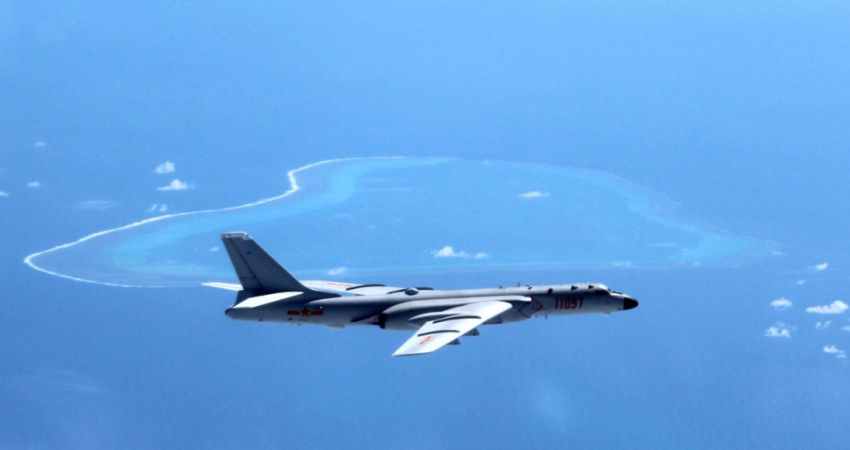
The Non-Existing South China Sea Islands
All evidence shows that the Qing
emperors made no effort to administer Taiwan, so by the time Japan acquired the
island in 1895 after the Sino-Japanese war, the map they first drew defined
that region – about half the island – as unadministered tribal territory. Fifty
years of Japanese rule created the sinews of modern Taiwan, with improved
agriculture, education, railways, and urban development, all having a Japanese
feel that prevails today. Although facing initial resistance, the Japanese
treated Taiwan gently compared to Korea, and a legacy of goodwill remains.
After the Japanese
defeat, the Taiwanese yearned not for independence but autonomy from a chaotic
mainland in the grip of the civil war between Chiang Kai-shek’s KMT government and the Communists.
But such Taiwanese thoughts of independence were brutally suppressed by
February 28, 1947. In the following days, 5,000 to 10,000 Taiwanese, including
many local leaders, were shot by Chiang’s forces, and Taiwan’s identity was
suppressed.
KMT domination was
massively reinforced by Chiang’s retreat to the island in 1949, supposedly as
the base from which to reclaim the mainland. About one million KMT loyalists
fled to Taiwan in 1949, becoming about 15 percent of the population and
controlling all the levers of the state, with martial law continuing until
1987.
That Taiwan
moderately prospered over the following decades was less due to KMT rule than
to the combination of the education and modernization instilled by Japan and by
the capital and markets that the US offered. Refugee capital and expertise from
the mainland also played a role. Growing prosperity and the death of Chiang
Kai-shek gradually saw the emergence of a more liberal state after Taiwanese
Lee Teng-hui became vice-president in 1984 and president in 1988, the decline
of mainlander influence and the rise of the overly pro-Taiwan autonomy
Democratic Progressive Party.
And even if one were
to claim Taiwan may be culturally Chinese, its history is different; its years
under mainland Han rule were relatively brief. The fact that most of its
population is of Han Chinese origin is irrelevant – Singapore is majority Han
Chinese too.
President Xi might believe a large part of the Pacific ('the
South China Sea') in reality belongs to
China, as has been
taught in Chinese schools since the 1940s based on a map
created by cartographer Bai Meichu in 1936, who later advised the Republic of China
government on which territories to claim after the Second World War.
In the
above-mentioned New Atlas of China's Construction (中華建設新 圖), the James Shoal (off Borneo), Vanguard
Bank (off Vietnam), and Seahorse Shoal (off the Philippines) are drawn as
islands. Yet, they are underwater features largely due to mistranslations
using what was
originally a British publication.
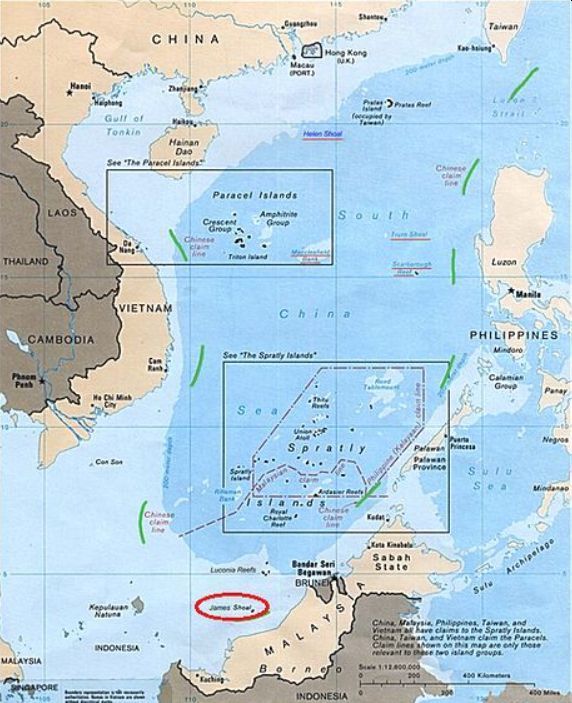
As we have earlier
described, a turning point for Bai and others who saw China's need to create a new Nation-State was
the Versailles peace conference's outcome in 1919. In an article in the June 2013 issue of China
National Geography,
Shan Zhiqiang, the chief executive editor,
added: The nine-dashed line has been painted in the hearts and minds of
the Chinese for a long time. It has been 77 years since Bai Meichu put in his 1936 map. It is now profoundly
engraved in the hearts and minds of the Chinese people. There will not be any
time when China will be without the nine-dashed line.
The Making Of The Chinese Pacific
It is clear that Bai
(whose New Atlas of China owed as much to his nationalist imagination as
to geographical reality) was quite unfamiliar with the South China Sea
geography and undertook no survey work of his own. Instead, he copied other
maps and added dozens of errors of his own, which continue to cause problems to
this day. Like the Maps Review Committee, he was completely confused by the
portrayal of shallow water areas on British and foreign maps. Taking his cue
from the names on the committee’s 1934 list, he drew solid lines around these
features and colored them in, visually rendering them on his map as islands
when in reality, they were underwater. He conjured an entire island group
across the sea center and labeled it the Nansha Qundao, the ‘South Sands Archipelago.’ Further south,
parallel with the Philippines coast, he dabbed a few dots on the map and
labeled them the Tuansha Qundao,
the Tuansha Qundao,
the ‘Area of Sand Archipelago.’ However, at its furthest extent, he drew three
islands, outlined in black and colored in pink: Haima Tan
(Sea Horse Shoal), Zengmu Tan (James
Shoal), and Qianwei Tan (Vanguard Bank).
Thus, the underwater
‘shoals’ and ‘banks’ became above-water ‘sandbanks’ in Bai’s imagination. On
the map's physical rendering, he then added innovation of his own: the same
national border that he had drawn around Mongolia, Tibet, and the rest of
‘Chinese’ territory snaked around the South China Sea as far east as the Sea
Horse Shoal, south as James Shoal and as far southwest as Vanguard Bank. Bai’s
meaning was clear: the bright red line marked his ‘scientific’ understanding of
China’s rightful claims. This was the first time such a line had been drawn on a Chinese map.
A key part of the
assertions was to make the names
of the features in the sea sound more Chinese. In October 1947,
the RoC Ministry of the Interior issued a
new list of island names. New, grand-sounding titles replaced most of the 1935
translations and transliterations. For example, the Chinese word for Spratly
Island was changed from Si-ba-la-tuo to Nanwei (Noble South), and Scarborough Shoal was
changed from Si-ka-ba-luo (the
transliteration) to Minzhu jiao (Democracy Reef). Vanguard Bank’s Chinese name
was changed from Qianwei tan to Wan’an tan (Ten Thousand Peace Bank). Luconia Shoals' name was shortened from Lu-kang-ni-ya to just Kang, which
means ‘health.’ This process was repeated across the archipelagos, largely
concealing the foreign origins of most of the names. A few did survive,
however. In the Paracels, ‘Money Island’ kept
its Chinese name of Jinyin Dao and Antelope
Reef remained Lingyang Jiao. To this day,
the two names celebrate a manager and a ship of the East India Company,
respectively.
At this point, the
ministry seems to have recognized its earlier problem with the translations of
‘shoal’ and ‘bank.’ In contrast, in the past, it had used the Chinese word tan
to stand in for both (with unintended geopolitical consequences); in 1947, it
coined a new word, ansha (Ànshā), literally ‘hidden sand,’ as a replacement. This
neologism was appended to several submerged features, including James Shoal,
renamed Zengmu Ansha.
In December 1947, the
‘Bureau of Measurements’ of the Ministry of Defence printed
an official ‘Location Map of the South China Sea Islands, almost identical to
the ‘Sketch Map’ that Zheng Ziyue had drawn
a year and a half before. It included the ‘U-shaped line’ made up of eleven
dashes encircling the area down to the James Shoal. In February 1948, that map
was published as part of the Atlas of Administrative Areas of the Republic of
China. The U-shaped line, with an implicit claim to every feature within it,
became the official position.
Therefore, it was in
1948 that the Chinese state formally extended its territorial claim in the
South China Sea to the Spratly Islands, as far south as James Shoal. Something
changed between July 1933, when the Republic of China government was unaware
that the Spratly Islands existed, and April 1947, when it could ‘reaffirm’ that
its territory's southernmost point was James Shoal. What seems to have happened
is that, in the chaos of the 1930s and the Second World War, a new memory came
to be formed in officials' minds about what had happened in the 1930s. It seems
that officials and geographers managed to confuse the real protest issued by
the RoC government against French
activities in the Paracels in 1932 with a
non-existent protest against French actions in the Spratlys in
1933. Further confusion was caused by the intervention of Admiral
Li Zhun and his assertion that the islands annexed by France in 1933
were indisputably Chinese.
The imagined claim
conjured up by the confusion between different island groups in that crisis
became the real territorial claim.
Pratas's islands are now a conservation zone where
visitors can send postcards back home from a mailbox guarded by a
cheerful-looking plastic shark. Not far away is a new science exhibition
explaining the natural history of the coral reef and its rich marine life.
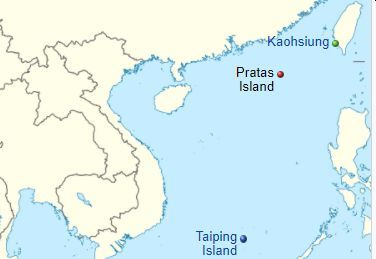
Overlooking the parade
ground (which doubles as a rainwater trap) stands a golden statue of Chiang
Kai-shek in his sun hat, and behind him is a little museum in what looks like a
scaled-up child’s sandcastle.
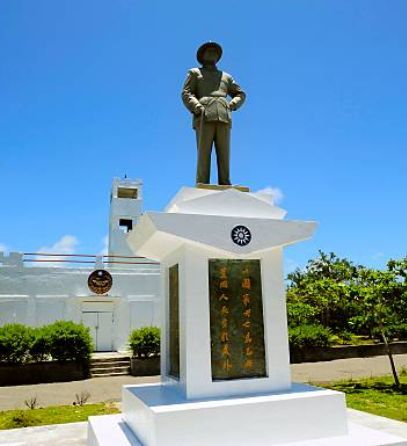
This museum holds, in effect, the key to resolving the
South China Sea disputes. Its assertion of Chinese claims to the islets
demonstrates the difference between nationalist cartography and actual
administration. Bai Meichu may have drawn a
red line around various non-existent islands in 1936 and claimed them as
Chinese, but no Chinese official had ever visited those places. The maps and
documents on the museum walls tell the Republic of China (RoC) expedition's story to Itu Aba
in December 1946 and a confrontation with some Philippine adventurers
in 1956. Still, without any other evidence, the museum demonstrates that China
never occupied or controlled all islands. In the Paracels,
it occupied one, or just a few, until 1974, when the People’s Republic of China
(PRC) forces invaded and expelled the Vietnamese garrison. In the Spratlys, the RoC occupied
just one or two. The PRC took control of six reefs in 1988 and another in 1994.
The Current Reality
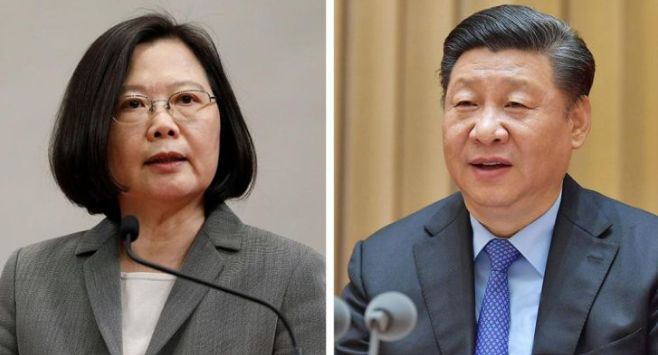
For the people of Taiwan,
joining the People’s Republic of China (PRC) has never been less appealing.
According to a frequently cited tracking survey by National Chengchi
University, the share of Taiwanese residents who want to unify immediately with
the mainland has always been minuscule, consistently less than three percent.
But the percentage that thinks Taiwan should eventually move toward
unification—not necessarily with today’s Chinese regime—has fallen
dramatically, from 20 percent in 1996 to five percent today. In the last two
presidential elections, the historically pro-unification Kuomintang party (KMT)
has suffered landslide defeats, failing to garner even 40 percent of the vote.
President Tsai
Ing-wen stepped down
as party chairperson at
the DPP’s post-election press conference, accepting responsibility for the
party’s poor performance. On the same stage, in almost the exact words, Tsai
resigned from the same position only four years ago, following the devastating
2018 local elections, during which the DPP lost seven of
the 13 seats it
held.
In a column penned in 2018, You Ying-lung, the chairman of the Taiwan Public
Opinion Foundation (TPOF), wrote that the DPP had lost two years into the Tsai
administration mainly for failing to reflect public opinion.
In 2022, with only
six offices left to defend, the DPP still dropped one seat — for a similar
reason. During local news channel TVBS’s live election night coverage, TPOF Chairman You said, “there are wide
discrepancies between the DPP’s grasp of public opinion and the party’s
direction,” failing many of its strategies and candidates in this election
cycle.
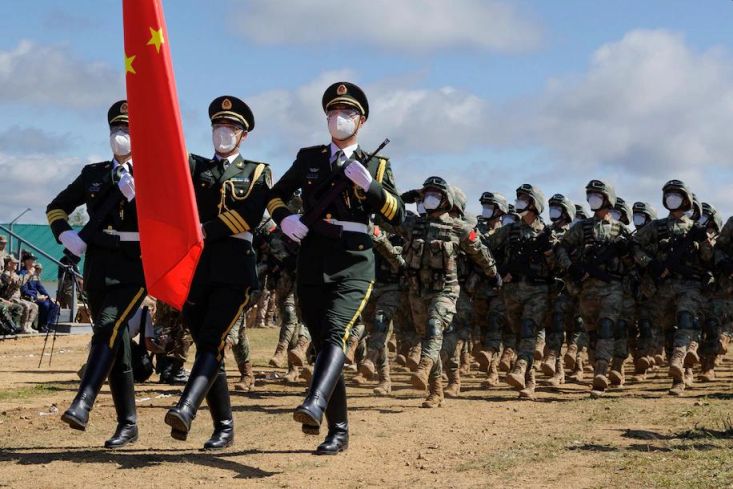
Even Though China Will Be Planning An Invasion, Taiwan
Has Its History, Culture, Identity, And National Pride.
It is easy to understand
why unification is so unpopular. Over the last four decades, Taiwan has transformed itself into a liberal, tolerant,
pluralist democracy. China has remained a harsh autocracy, developed an
intrusive surveillance state, and executed genocide against its population.
Unifying with the PRC would mean the end of almost all of Taiwan’s hard-won
political freedoms, manifesting when China forcibly integrated Hong Kong into
the mainland despite its promise to allow the territory to remain
self-governing under a formula called “one country, two systems.” And many, or
perhaps most, Taiwanese people would not want to unify with China regardless of
the nature of its government. Taiwan has its history, culture, identity, and
national pride.
Yet, although public
opinion data make it clear that the overwhelming majority of Taiwanese people
have little interest in being ruled by Beijing, that does not mean they want a
formal declaration of independence. The country’s understanding of independence
has evolved significantly over the last generation among the general public and
political elites. In decades past, independence was commonly thought to require
an unequivocal, formal break with any legal or professed ties to China. But
today, such a move is widely seen as unnecessary. To most people, Taiwan is
already a fully sovereign country, not merely a self-governing island that
exists in a state of limbo. There is no need to rock the boat by formally
declaring what is already the case, especially given that Beijing would
undoubtedly have a furious response to such an action. And since Taiwanese
politicians must respond to public opinion, political elites who support
independence have primarily come to the same conclusion as the country’s
people; rather than quixotically challenging the status quo, most of them have
decided that any differences between their ideal position and the status quo
are minor—and not worth fighting over.
It surprises many
Westerners to learn that Taiwanese independence is not merely rooted in
anti-Chinese sentiments and that it is not an idea that arose only after 1949
when Republic of China (ROC) leader Chiang Kai-shek and his million and a half
followers fled to the island after losing the Chinese Civil War. The year 1895,
when Beijing ceded Taiwan to Japan after being defeated by Tokyo in a war, was
arguably just as pivotal as 1949. A modern sense of Taiwanese national identity
began to take shape, and there were calls for Taiwanese autonomy and
independence throughout the Japanese colonial era. Taiwan independence activist
Su Beng pushes the timeline
back even further, arguing in his seminal 1962 work, Taiwan’s 400-Year
History, that Taiwan has been a distinct nation and society since
large-scale Han immigration to the island began in the early 1600s. For Su, Taiwan’s history was marked by repeated colonization
and exploitation by external powers as the Dutch, Spanish, claimants to the
throne of the disintegrating Ming dynasty, the Qing dynasty, the Japanese, and
Chiang’s Kuomintang (KMT) all set up regimes in Taiwan for their
purposes—denying the Taiwanese people control over their destiny.
Chiang’s regime in
Taiwan rested on the idea that the ROC had not lost the civil war and was still
China's legitimate government. Although the ROC positioned itself as a
democracy, the KMT could not risk any open challenges to this claim, so it
declared martial law. National-level representatives were frozen in office
without the need to face reelection, and the government systematically silenced
political opposition. The KMT kept a firm grip on the country’s entire
political edifice through its control of the state machinery, especially the
military. Any Taiwan-centric appeals, especially for Taiwanese independence,
were seen as a direct affront to the regime’s legitimacy and were ruthlessly
suppressed. Throughout the KMT authoritarian era, the ROC government was the
primary obstacle to Taiwanese political power and self-rule.
As a result,
Taiwanese nationalists concluded that the way to set the Taiwanese people free
was to slough off this entire political structure. The KMT, the ROC, and any
ties to China had to go. But as Taiwan democratized in the late 1980s and early
1990s, these activists discovered that their vision had limited appeal. In
1991, the country’s geriatric officeholders were finally compelled to retire.
Taiwan was able to fully reflect a national-level representative body for the
first time as every seat was at stake in the National Assembly, an institution
with the power to elect the president and amend the constitution. (The body was
later abolished.) The Democratic Progressive Party (DPP)—the KMT’s main
opposition—confidently called for replacing the Republic of China with a
formally independent Republic of Taiwan. It was a disaster; the DPP won 23
percent of the vote. The electorate's verdict was that formal independence was
just too radical, and for a generation afterward, the country’s common
political wisdom was that Taiwan's independence was ballot-box poison.
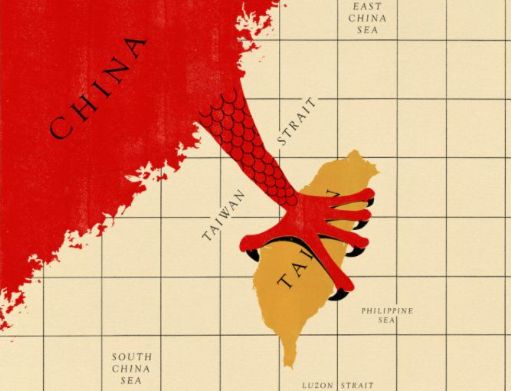
At the time, it still
seemed possible that Taiwan would eventually unify with the mainland. For
decades, the authoritarian regime had taught the population that unification
was desirable and inevitable. Taiwan’s gradual democratization did not feature
a sharp break from the past, so the KMT remained in power even after people
could vote. Pro-unification Chinese nationalists retained outsize cultural and
political influence. Meanwhile, China was experiencing the rapid economic
growth that Taiwan had undergone decades ago—the growth that had helped Taiwan
democratize. Many Taiwanese people believed the mainland would surely
experience similar political reforms as its economy kept expanding. Chinese
nationalists in Taiwan expected that once China changed and the two states
rejoined, Taiwan would play an influential (and perhaps predominant) role in
shaping their shared future. Unofficial bodies from the two sides even met in
1992 and 1993, taking the first steps toward establishing regular communication
channels. The question of sovereignty illustrated both hopes for pragmatic
cooperation and how difficult compromise would be. Since hammering out a
mutually acceptable written statement was impossible, the delegates informally
agreed to talk past each other in what would later be (ironically) dubbed the
1992 Consensus. Each side orally stated its version of the “one China” principle,
pretended not to hear the other side, and refused to acknowledge that there
could be any different interpretation.
But the hopes that
the two sides would gradually become more similar and inch toward a mutually
agreeable political union were misplaced. As Taiwan’s democracy deepened,
appeals to Chinese nationalism found a smaller and smaller receptive audience
among the island’s population. At the same time, the PRC became more rigid and
domineering instead of democratizing as it grew wealthier and more
powerful.
The arc of the 1992
Consensus encapsulates these failed hopes. After losing the 2000 presidential
election to the DPP, KMT chair Lien Chan rebuilt his party on a vision of
making Taiwan rich and ensuring peace by integrating Taiwan’s economy into
China’s. To guarantee that PRC officials would be willing to engage with their
Taiwanese counterparts, Lien devised a formula based on what the two sides had
supposedly agreed to in 1992: “One China, each side with its interpretation.”
Ordinary Taiwanese voters were reassured that the status quo would be preserved
since Taiwan’s interpretation was that “one China” meant the ROC. This formula
laid the foundation for KMT politician Ma Ying-jeou’s
presidency, which featured a great deal of official contact with China and
economic interaction. But the PRC became increasingly insistent that the 1992
Consensus was simply that there was “one China”—the PRC—and demanded concrete
progress toward unification. It never acknowledged the “each side with its own
interpretation” part of the equation, so confederation would mean that the ROC
ceased to exist. This not only choked the consensus to death by depriving it of
any ambiguity or flexibility, but it also made clear that the KMT and ROC were
not equal—or even unequal—partners with the Chinese Communist Party and the PRC
in determining China’s future. The KMT’s dreams of creating a peaceful,
prosperous, democratic, unified China were utterly discredited, and the
incompatibility of the PRC’s position with the preservation of the ROC made
unification the new ballot-box poison.
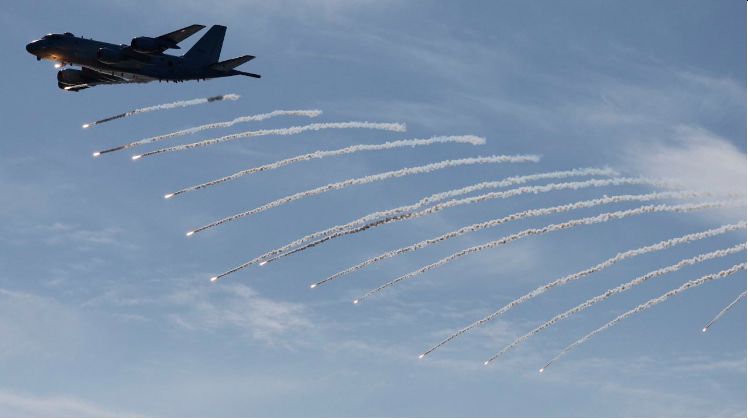
As It Is
Since its 1991
election debacle, the DPP has steadily moved away from a formal independence
platform. By 2000, it took the position that Taiwan was already an independent,
sovereign state named the Republic of China, and no declaration of independence
was necessary. Current Taiwanese President China Tsai Ing-wen, a DPP
politician, has developed the idea of Taiwanese sovereignty more fully:
eschewing formal autonomy is not the only way she differs from earlier
independence activists. Tsai emphasizes the Taiwanese people’s unique, shared
history, including the “white terror” (the violent repression carried out by
the KMT’s autocracy), military standoffs with Beijing, rapid economic growth,
democratization, sporting triumphs, and natural disasters. However, her vision
of the Taiwanese people is constructed on 70 years, not 400 years, of common
experience, so it explicitly includes postwar immigrants as integral parts of
the population rather than as colonizing outsiders. She has even positioned
herself as a champion of the military, recasting an institution that was once
the bedrock of the authoritarian regime and the archenemy of Taiwanese
nationalism as the guarantor of Taiwan’s integrity and sovereignty.
Tsai’s ideas do not
make traditional independence activists happy; many hardcore DPP supporters
dream of an independence referendum and feel slightly queasy when she poses
with a ROC flag. But hers is a position that fits quite comfortably with what
most Taiwanese people want. The National Chengchi
University tracking poll on public attitudes toward unification and
independence shows that, although support for independence has risen over time,
most Taiwanese people prefer the status quo. Other polls suggest that the
tracking surveys might underestimate the depth of support for the status quo.
Two postelection surveys, one from 1996 and one from 2020, asked people who
preferred the status quo whether they would support unification if political,
economic, and social conditions in China and Taiwan were similar (for instance,
if China became a wealthy democracy), or if they would support declaring
independence if doing so wouldn’t provoke retaliation from Beijing. The share
of status quo supporters open to unification, even under these ideal
hypothetical conditions, plummeted from 58 to 22 percent. The share of status
quo supporters open to independence remained roughly stable, drifting from 57
to 54 percent.
It is clear from the
main tracking poll and the responses of status quo supporters that fewer people
today want unification. But as for the growing support for independence, it is
critical to remember that ideas about the meaning of independence have changed.
A 2020 study found that more than 70 percent of Taiwanese people believe their
country is already a sovereign state and that only a tiny fraction felt a need
to sever ties with China formally. The increased support for independence over
the past few decades does not necessarily indicate that a growing number of
citizens are clamoring for a declaration of independence.
This shift in opinion
has only sometimes resulted in electoral success for the DPP. During the last
two local elections, the party has performed disastrously. On November 26, Tsai
was compelled to step down as party chair after the DPP could only win five of
22 mayoral races. But it would be a mistake to interpret these results as a
shift in public attitudes toward unification or away from independence. The
local elections were about local government issues such as road construction,
welfare programs, and responses to the pandemic—not China. Most races are best
understood as referendums on the performance of popular KMT incumbents running
for reelection. Notably, sovereignty or how to deal with China has been mainly absent from the DPP’s
post-election discussions about the reasons for the poor outcome. Likewise, no
one in the KMT is crowing that this result means it no longer has to worry
about being attacked as a pro-unification party.
But although Tsai may
no longer be the party chair, her grand vision for Taiwan’s future—situating
Taiwan in the international community of democracies, strengthening the
country’s military and bolstering cooperation with other armies, gradually
diversifying Taiwan’s economy, pursuing progressive social welfare policies,
defending Taiwan’s sovereignty, and a host of other measures—remains unchallenged
inside the DPP. China will inevitably be on the ballot in the 2024 presidential
and legislative elections. Unless the DPP forfeits its dominant position as the
champion of the status quo by recklessly pursuing formal independence, it
should once again have a clear electoral advantage.
As aptly
written, If Washington is to escape a cycle of conflict or the constant threat
of conflict with China over Taiwan, it will require bolder policymaking than
efforts to smooth over differences with Beijing in the aftermath of a war.
Defeating an invasion force alone will not be enough to win Taiwan's peace.
Given the difficulties inherent in either conventional or nuclear deterrence,
even following a major victory, before Washington undertakes what may be merely
the first of several phases of a Taiwan conflict, it should consider whether it
is willing to run the risks required to win the peace that is to follow.
In the end, as Connor
Swank aptly wrote
in The Diplomat, If Washington is to escape a cycle of conflict or the
constant threat of conflict with China over Taiwan, it will require bolder
policymaking than efforts to smooth over differences with Beijing in the
aftermath of a war. Defeating an invasion force alone will not be enough to win
Taiwan's peace. Given the difficulties inherent in either conventional or
nuclear deterrence, even following a major victory, before Washington
undertakes what may be merely the first of several phases of a Taiwan conflict,
it should consider whether it is willing to run the risks required to win the
peace that is to follow.
1. LSE Undergraduate
and Postgraduate Students Headcount: 2013/14–2017/18, https://info.lse.ac.uk/staff/divisions/Planning-Division/Assets/Documents
.
2. CNA, ‘Lúndūn zhèng jīng
xuéyuàn gōnggòng yìshù jiāng bǎ
táiwān huà wéi zhōngguó wàijiāo
bù kàngyì’, 7 April 2019,
https://www.cna.com.tw/news/firstnews/201904040021.aspx (accessed 2 March
2020).
3. Keoni Everington, ‘LSE ignores
Chinese cries, add an asterisk next to Taiwan on the globe,’ Taiwan News, 10
July 2019, https://www.taiwannews.com.tw/en/news/3742226 (accessed 2 March
2020).
4. Keoni Everington, ‘LSE ignores
Chinese cries, adds asterisk next to Taiwan on the globe’, Taiwan News, 10 July
2019, https://www.taiwannews.com.tw/en/news/3742226 (accessed 2 March 2020).
For updates click hompage here